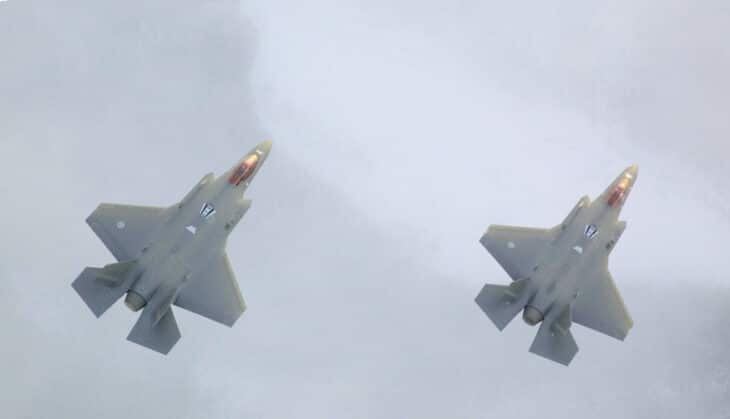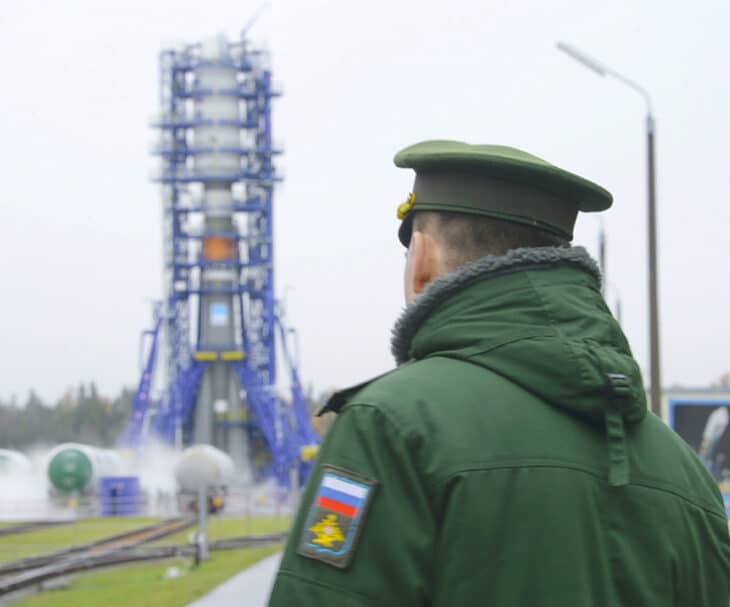The US Space Force in Transition
The 2017 National Security Strategy (NSS) of the United States provided broad operational guidance in accordance with President Trump’s “America First foreign policy.”1 In tone the NSS was a significant shift in priorities, but for space policy there appeared little change from previous administrations.

The US continues to assert that “unfettered access to and freedom to operate in space [is] a vital national interest” and reliance on commercial space and military space support is growing.2
Three “priority actions” were ordered: a National Space Council would be re-established under the Vice President to develop a strategy that would ensure “American leadership in space, regulations restricting commercial space efforts would be changed to “extend national security protections to” and “strengthen competitiveness,” and human and scientific exploration of the solar system would receive increased attention.3 The rather innocuous half-page (of the 55-page report) devoted to space strategy certainly failed to presage what happened next.
In March 2018, after toying with the idea in a few side remarks earlier in the year, President Trump announced his intention to fundamentally reform the Department of Defense (DOD). Stating unequivocally that «space is a war-fighting domain, just like the land, air and sea,» he pushed for “a military space force that would be the orbital equivalent of the Army, Air Force and Navy.”4 The remarks were dismissed by much of the press as Trump admitted he’d originally conceived of the Space Force as a joke, but after thinking it over found it to be “a great idea.”5 Given the strong resistance by the Secretaries of Defense and the Air Force to a proposed Space Corps in testimony before Congress just a few months earlier, an independent Space Force didn’t appear likely. Summing up the arguments of detractors, former NASA Director Sean O’Keefe listed the shortcomings as a massively unnecessary expense, a bureaucratic nightmare, and if attempted could “compromise the sanctity of considering space to be off limits from warfare.»6
Unified command and control
Nonetheless, the President directed his newly-formed National Space Council to coordinate a plan to implement his vision. In August, Vice President Pence detailed the way forward. The Pentagon would prepare the way for a fully independent sixth branch of the Armed Forces, a Department of the Space Force, by 2020. The process would be incredibly swift, beginning with the re-establishment of a unified combatant command—US Space Command—along with a Space Operations Force and joint Space Development Agency. The first “will establish unified command and control for our Space Force operations, ensure integration across the military, and develop the space warfighting doctrine, tactics, techniques, and procedures of the future,” the second will comprise “an elite group of joint warfighters, specializing in the domain of space,” and the third “will ensure the men and women of the Space Force have the cutting-edge warfighting capabilities that they need and deserve.”7
The Department of Defense’s February 2019 proposed United States Space Force (USSF) plan is currently under consideration by Congress. It scales back the move to a separate but equal department significantly, to a semi-autonomous organization within the Department of the Air Force. While the proposal appears to fall well short of the President’s initial vision, it is certainly more attainable in the near term than a complete and immediate separation. It would also be historically fast, as, according to the Vice President, the fundamental resources are already in place across the other services and intelligence agencies and it will be “built on the lessons of the past.”8
Evolution of the US Space Force
Since the early days of the Space Age, heralded by the 1957 Soviet launch of Sputnik, all US presidential administrations have acknowledged the importance of space capabilities in support of American national security. On July Fourth, 1982, in a speech welcoming home the crew of the fourth Space Shuttle mission, President Ronald Reagan announced a significant public shift in American space policy. While the US would continue to endorse the principles of international cooperation and free access to space for all nations, it would also reserve the right to defend its space capabilities with military force. Detailed in National Security Decision Directive 42 (NSSD-42), space support capabilities had become so vital to American military power that their survivability in crisis and conflict had to be assured.9 To that end, the US would initiate a program to develop an anti-satellite capability with the goal of operational deployment to deter threats to US and Allied space systems and, within the boundaries of international law, to deny an opponent the use of space in support of hostile actions by terrestrial forces in times of conflict and war.10
In the spring of 1981, the first year of the new administration, Defense officials began circulating support for a fresh look at space organizational structure that would ultimately lead to a new combatant command—US Space Command (USSPACECOM). Frustrations with the soaring costs and inefficiencies of space systems acquisition, the mess of some 50 uncoordinated military organizations working with pieces of the space enterprise, and the rise of a Soviet program that appeared to be racing ahead in military space warfighting capabilities fueled frustrations that led to a call for action. In September, the Air Force added a fifth subunit to its planning staff, the Directorate of Space Operations, to provide options. In late 1981, House Resolution 5130 required the US Air Force to report to Congress on the feasibility of establishing a space command.11
The Department of Defense (DOD) strongly opposed the move. It wasn’t needed, would duplicate bureaucracies, and cost too much. In January 1982, A Government Accounting Office (GAO) report suggested a separate space command that would coordinate all military space activities could instead result in overall cost savings undercut those arguments; specialization was in fact the foundation of organizational efficiency. In June 1982, the USAF revealed it would establish a subordinate AF Space Command in Colorado Springs no later than September of that year.12
In March of 1983, President Reagan announced the Strategic Defense Initiative (SDI), a bold new focus on space capabilities as the center of a new national military strategy. At its core was a space-based ballistic missile defense capability that, because it would have global coverage, would extend a nuclear shield over the earth. The idea was ridiculed in the press and dubbed Star Wars after the popular science fiction movies; a perfect shield would be technically impossible, it would be extraordinarily expensive, and it could be countered by simply increasing existing arsenals. But if it could be achieved, it would take coordination among all the services and numerous civilian intelligence agencies. Two years after the start-up Air Force Space Command (AFSPACECOM) broke ground in Colorado, the co-located US Space Command was inaugurated. By the end of the decade, the commander of USSPACECOM—dual-hatted as commander of the North American Aerospace Defense Command (NORAD)—had gained authority over all military space operations, had taken over land-based ballistic missile responsibilities from Strategic Air Command, secured nascent computer operations (the precursor to today’s Cyber Command) authority, inaugurated a warfighting Space Operations Center (SPOC) and a Joint Space Intelligence Operations Center (JSIOC), and usually was simultaneously commander of both US and Air Force Space Commands.13
Perhaps its growth went too far down the road toward an independent space service, in the process threatening entrenched bureaucratic constituencies. Despite its spectacularly successful debut in Operations Desert Shield and Desert Storm—possibly because of it—the Air Force started taking back control. By the mid-1990s, the space-specific portion of the DOD budget had approached $10 billion, with upwards
of 85 percent earmarked for the Air Force.
A similar amount was distributed to government and intelligence agencies, for an average of $18 billion annually.14 That’s a lot of money to let go of. Despite the 1998 Rumsfeld Commission warning of a “space Pearl Harbor” if a lack of emphasis caused the US to fall behind a rising China and resurgent Russia, further recommending a gradual evolution toward a separate Space Corps within the Air Force as an intermediary step on the path to a separate Space Department, USSPACECOM authorities were steadily transferred elsewhere. Following the events of September 11, 2001, all DOD efforts not focused on the Global War on Terror (GWOT) were subordinated. NORAD was moved under the new North American Command (NORTHCOM), and all duties not already purged were subsumed by SAC. In 2002, USSPACECOM was disbanded. AFSPACECOM became the de facto US Space Force.15
Despite the 1998 Rumsfeld Commission warning of a «space Pearl Harbor» if a lack of emphasis caused the US to fall behind a rising China and resurgent Russia, further recommending a gradual evolution toward a separate Space Corps
Fast forward to 2017
An exasperated Mike Rogers (R-AL), Chair of the House Armed Services Strategic Forces Subcommittee, concerned that America now faced multiple near-peer competitors in outer space despite a perceived insurmountable advantage a generation before, had enough. Implicitly accusing the USAF of diverting space funds to priority air projects, and mismanagement of the rest, Rogers and ranking Democrat Jim Cooper (D-TN) inserted language into the 2018 National Defense Authorization Act (NDAA) directing an autonomous Space Corps be established within the Air Force along the lines of the Marine Corps in the Navy.16 The measure passed the House but was tabled for future consideration in the Senate pending further study. Nonetheless, the DOD and Air Force pushed back strongly, marshalling precisely the same arguments the US Army used in its attempts to retain the Army Air Forces after WW II—it wasn’t needed as the purpose of the air arm was to support the fight on the land (and therefore was best overseen and coordinated by the land commander), it would create an unnecessary parallel bureaucracy, and would be prohibitively expensive. Demonstrating an astonishing lack of historical acumen, in congressional testimony the Air Force leadership argued that an independent separate Space Corps would take away from AFSPACECOM’s primary functions in support of terrestrial forces best coordinated by an air-minded commander), it would create an unnecessary parallel bureaucracy, and be too expensive.
At the time, the White House, too, opposed Rogers’ and Cooper’s plan. Following the 2018 mid-term elections, however, President Trump one-upped the Space Corps blueprint and surprisingly announced his intention to create a separate and equal Department of the Space Force. In August, Vice President Pence detailed the administration’s vision.17 The USAF would immediately begin comprehensive preparations to split off a co-equal Department of the Space Force following a transition including a Marine-style independent organizational structure within the Department of the Air Force, draft a plan for congressional budget support, and coordination with other services and national intelligence space cadres for consolidation efficiencies.
With the Commander-in-Chief’s directive clear, the Defense Secretaries and Joint Chiefs publicly supported the initiative, though some continued to privately argue the folly of the move as bureaucratically redundant and wastefully expensive. A memo from the Office of the Secretary of the Air Force was released (or “leaked”18) stating a five-year conservative estimate of the additional cost of separating an independent space service would approach $13 billion over five years, “likely to be revised upward.”19
By October, however, the Air Force leadership appeared to have dropped even veiled opposition, and submitted a viable, comprehensive transition plan for congressional approval at the end of February 2019. Surprisingly, the anticipated cost of the transition would be quite low, and bureaucratic overlap remarkably lean. The Pentagon requested just $72 million for fiscal 2020, and just $2 billion over the next five years to stand up a functioning Space Force within the Department of the Air Force modeled after the US Marine Corps (within the Department of the Navy).20 Beginning with less than 200 assigned personnel in the first year, the Space Force should grow to approximately 15,000 military and civilian billets by 2025. After that, when the organization is expected to be fully operational, the Pentagon’s plan would stabilize the Space Force budget at about $500 million per year, or “about 0.07 percent of the Defense Department’s annual budget.”21
President Ronald Reagan announced a significant public shift in American space policy. While the US would continue to endorse the principles of international cooperation and free access to space for all nations, it would also reserve the right to defend its space capabilities with military force
The United States Space Force going Forward
The plan currently under consideration describes space as fundamental to US prosperity and national security. Noting that a new branch of the armed services has not been created since the Air Force in 1947, and that the world has fundamentally changed since then, the Department of Defense needs to adapt to new realities. If approved, the DOD shall establish a sixth branch of the Armed Forces dedicated to space in FY 2020 within the Department of the Air Force. The USSF will have 4-star representation on the Joint Chiefs of Staff, a 4-star Vice Chief of Staff, and a 4-star Commander of USSPACEOM.22 There is certainly room to grow, but considering the generally high cost of space operations, it is notable that the projected $500 million per year USSF budget at maturity represents just under three percent of the current $18 billion annual DOD budget for space.23 Personnel and budget aside, compared to the analogy offered for USSF, the US Marines within the Department of the Navy, is rather strained.
The Marines are a semi-independent force that controls its own organize, train, and equip requirements as well as complete budget authority. The US Navy in FY2017 had a combined strength of 597,000 active, reserve, and civilian personnel. The Marines had a combined strength of 222,000 active and reserve, or more than a third that of its parent service. Their independent budgets are proportional to their relative sizes. The top Navy and Marine officers, the Chief of Naval Operations and the Commandant of the Marine Corps, report directly to the Secretary of the Navy. Although there is an Undersecretary of the Navy, the billet is for assistance to the Secretary and as a fill-in when the Secretary position is vacated, unfilled, or temporarily otherwise engaged. While the Chief of the Space Force will report directly to the Secretary of the Air Force, and there is currently an Undersecretary of the Air Force that performs parallel duties to the Navy’s Undersecretary, the submitted Space Force plan adds a second “Undersecretary of the Space Force” that is “responsible for working with Department of the Air Force officials, as well as other Department of Defense officials, for the overall supervision of space matters.”24 The new Under Secretary will be subordinate to the Under Secretary of the Air Force, as the latter is specifically





